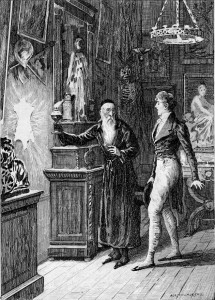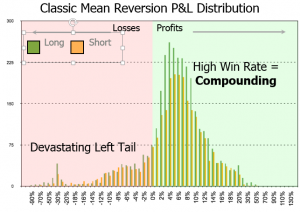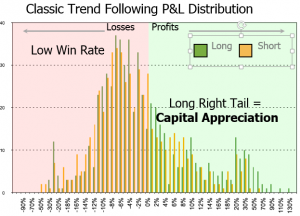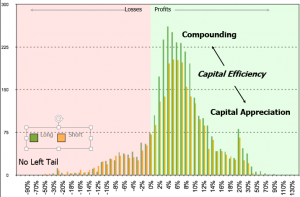Edge can be summed up in a formula that applies to any instrument (see below). Like risk management, everyone like to talk about it, but few people actually can distinguish between sustainable, stylistic, and systemic edge
I. Examples
Let’s start with examples:
Chinese IPOs: Institutional and some retail investors participate in IPOs. Classic trade is to sell half to 100% of the allocation at the Open of the first day and book the disount. Chinese IPOs used to go up 100% in 3-4 days.
That “edge: is clearly gone now that they open 50% below and that “investors”/flippers have to keep their holdings for a certain period.
More on Chinese IPOs later when we talk about specific versus general
Stock split: there was a strange loophole in Japan, where stock split were announced 2 weeks before effective dates. So, the trade was to go Long prior, reverse the trade and go short at the close of the day before the split went ex-date.
Korean USD trading
In Korea, foreign participants had to trade in USD, while locals were allowed to trade in KRW. And then You wonder why some markets never seem to go anywhere ? Borrow availability was vastly different.
A shares B shares in China
Foreigners were not allowed to trade A shares.
Prop trading:
This is probably one of the most egregious “edges”. Prop traders were carrying their facilitation business and encouraged to hold their own book…
II Types of edge
Systemic edges:
Locals in China and Korea were legally able to milk foreigners. This had nothing to do with talent. Arguably, it might have encouraged complacency. This is systemic edge. Another example of systemic edge is Ali Baba. There is no real competition from other shopping malls.
Those edge exist as long as regulatory inefficiencies are there to protect them. They are fragile, fickle but can last for some time.
They sometimes can be double edged. In their panic moves to contain the fall, Chinese authorities have asked some brokers like CITIC to engage in price stabilisation activities.
Stylistic/cyclical edge:
Some people know how to trade GARP (growth at reasonable price). Some know how to trade value. Others know how to ride Beta.
Their edge last as long as markets reward their style. Unfortunately, investors find it difficult to distinguish between skill and style. In other words, are managers good (or bad) because of what the markets reward (or punishes), or are they good because they adapted to what the markets reward.
There has been a lot research on the topic. Quants sometimes refer to this as luck versus skill.
A simple, down to earth trick to find out is: how do those managers fare when market style changes ? Does their performance suffer much more than the markets or can they contain losses ?
Sustainable edge
The rarest form of edge and the least talked about is sustainable edge. The reason why few people talk about it is because either deep down they know they do not have anything special, or they believe their outer game constitute sufficient sustainable edge.
For example, biotech analysts clocking 2-3 baggers one after another was great until a presidential candidate stopped being supportive of the industry. Unfortunately, no bull market has ever boosted anybody’s IQ.
III. So, how do we measure trading edge ? Where do we find examples and can it be replicated ?
A. Trading edge formula
Every trading strategy, investment method, track record that has, is and will be boils down to this formula:
Trading edge = Win% *Avg Win% – Loss% * Avg Loss%
This is also known as gain expectancy. This is just another fancy way to say average profit.
Guys studying finance have never heard of that one. They have heard a lot about efficient markets from guys with zero beginning of real track record…
Robustness of the edge can be tested via a t-stat. Van Tharp has popularized the formula by rebranding it into SQN: System Quality Number
t-stat = SQRT(trades) * Trading Edge / STDEV(Loss)
This t-stat recaptures frequency and deviation from the mean. In other words, it is OK to have a spectacular trading edge but it is quite useless if it trades every Friday 13th full moon (next one in 2017 and the after in 2023)
B. Examples of sustainable trading edges
In order to constitute a valid trading edge for any specific “investment obedience”, trading edge must be transmissible across the “trading tribe”
This immediately eliminates discretionary fundamental investing. Everyone in the fundamental analysis business likes to make reference to Warren Buffet. Yet, very few have a comparable performance.
I do not hate fundamental analysis, quite the opposite in fact. A good analogy is rock n’ roll. ELVIS and Ted Nugent are both rockers. Yet, no-one would ever dare putting The KING and that trigger happy human evolutionary challenged specimen in the same basket.
I wish I could say Value investing has some sustainable edge. Unfortunately, like fundamental analysis, the word has been perverted and used by everyone with a marketing pamphlet.
There is evidence of sustainable edge in systematic value investing.
Systematic trend following CTAs have a systematic edge. Their style has generated alpha over decades. Trading edge is transmissible: newer guys seem to fare well. (for disclosure purposes, I am not a CTA)
C. Can it be replicated ?
This is probably the most important question. No-one really cares about their neighbor trading edge. What they really want to know is: how can i develop my own trading edge ?
This is where the conversation takes on a different perspective. There are only two types of edge: specific and general.
Systemic, stylistic/cyclical edges are specific. They focus on a particular edge over the rest of the competition.
“Stock pickers” focus on getting this or that particular stock “right”. This is extremely specific.
General edge on the other hand is about making sure the above formula has a positive sign before the number.
The reason why CTAs have a sustainable replicable edge is not because they pick better stocks. They are not trying to be right on their view about lean hogs or German bunds. They trade the same asset class across various markets. That asset class is called risk. It has a number attached to it.
They can maintain a sustainable edge not because they try to be specifically right, but because they choose to remain generally right.
In other words, this is outcome versus process thinking.
Process can be formalised and quantified. As the great motivational speaker Jack Welch used to say: everything that can be quantified can be improved.
D. How to improve your edge ?
“He who controls the past controls the future”, 1984 George Orwell
Very few market participants have the courage to keep an honest record of their past trades. We are our trading history.
For example, my trading history is part of my every day position sizing. How i size my positions today is conditioned by how well past trades have performed. If they perform poorly, then I should trade smaller so as to preserve both financial and emotional capital.
1 Know your style
The first is to build a P&L distribution of your trades and find your style. There are only two types. Please look at my blog about mean reversion and trend following. Know and understand your style.
2. Know when your style stops working
It is great to be the best figure skater, but August tends to be a bit dull.
The simplest way to improve your edge is to limit drawdowns when your style goes out of favor.
Remember this very simple truth: profits look big only to the extent that losses are kept small. hardly rocket surgery, isn’t it ?
3. Restore normal risk when your style is in favor
This one goes against mainstream that encourages You to take risk when it works. The problem with this is how much is enough ?
Kahneman says we suffer from chronic overconfidence. That means we take too much risk and then get humbled.
So, my suggestion is not to take on more risk when it works. My suggestion is to take less risk when it does not.
Conclusion
Long answer, but prosecco was good this evening







